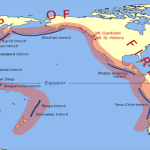South America is probably on every tourist’s bucket list. Who wouldn’t want to visit Machu Picchu, the Sacred Valley or Isla de Sol? Or see at least once the Rio carnival?
Sadly, even though Latin America is a genuinely amazing place, it also has a long history of high criminality rates, especially drug trafficking. If you plan on visiting it any time soon, you’ll surely appreciate a list with the top most dangerous countries in South America.
Let’s get down to business and see those countries in South America that aren’t safe to visit, as well as the reasons why they are unsafe areas. Don’t imagine that all countries in South America are hellish. That would simply be a wrong assertion.
Most dangerous countries in South America
- Mexico
Mexico has been and still is omnipresent on about every list with red flags for travelers you could ever find on the Internet. If you’re familiar in the least bit with American history, you already know why Mexico is so feared and avoided. Those reasons may have been emphasized by the actual president, Donald Trump, with his threats of building his dividing wall.
Mexico is a thriving nexus of drug traffickers. It’s no secret it’s there the US takes its marijuana, heroin and cocaine from. Drug cartels and the inability of the police forces to deal with so many of them spawn a high rate of homicides, violence and theft.
Sinaloa, Ciudad Juarez, Baja California, Durango, Tijuana and Guerrero are among the most violent cities in Mexico. It seems that all the violence is concentrated in the urban areas, although drug cartels fight in suburban and rural areas as well. Make sure that you’re completely safe if you travel to any of these cities.
The drug war is still in its brunt and there are no signs it’s going to stop all that soon, making Mexico the ultimate threat to a tourist’s security. It’s not surprising at all that Mexico subsequently makes the 1st position in this list (and in others, too).
-
Venezuela
In spite of the fact that Venezuela looks like a rustic piece of heaven from the exterior, things change for the worse pretty quickly once you step foot in the country. The greatest problems Venezuelans are faced with on a daily basis are: theft, carjacking, robberies and kidnappings.
These are produced by the poor economic and social environment. People are underpaid, unsafe and underfed, thus they have to rely on stealing and kidnapping tourists for ransom. A truly nightmarish scenario that unfortunately seems to endure the test of time, since little can be done to decrease the violence rate in the country, despite many efforts of doing so.
The slums (or barrios) are the most hazardous places to take walks in at night. 122 persons for every 100.000 become victims of homicide each year. Many countries have issued warnings for travelers, advising against visiting Venezuela, many of them applicable even in 2017, as the situation in the country is pretty much the same.
-
El Salvador
El Salvador is a small country, which makes it even easier to see what’s wrong with it. Sexual assault, carjacking, kidnapping, assault and armed robberies are pretty much a part of everyday life in there.
San Salvador is the city with the highest crime rate, with as many as 13 crimes per day. Gang wars are already routine and account for more than half of a year’s casualties. The most obvious reason why El Salvador has become a place fit for a post-apocalyptic horror flick is the blooming corruption.
El Salvador, subsequently, is one of those places that stop you in your tracks and make you think twice about visiting it.
-
Colombia
The most immediate issue one should be concerned when deciding to visit Colombia is kidnapping. Drug trafficking and armed rebels also contributes to the high rate of criminality that makes Colombia a dangerous place.
There have been instances when tourists were stopped by road blocks and kidnapped for ransom or assassinated. The state doesn’t really have a word to say, since the clashes between various armed groups is already too etched in reality to be wiped out easily.
If you do travel to Colombia, don’t travel by car outside the major cities, especially at night, as you can potentially be subjected to assault, robbery and extortion.
-
Guatemala
There were 101 killings in Guatemala last year alone. These are echoes of Guatemala’s dark history (a long and bloody civil war), so maybe the notion of “post-war” doesn’t quite apply here. Guatemala is known for incredibly high rates of violence and many tourists stay away from it precisely for that reason.
Human trafficking, street gangs, sexual violence, femicide and drug trafficking comprise the unbelievably high criminality rate in Guatemala. There have been reports of tourists being stopped on the roads by police officers impersonators and subjected to sexual assault, robbery and extortion.
Truly a place you don’t want to visit without thorough preliminary research and safety precautions. It has been said that a crime takes place on the streets every 90 minutes, so be very careful where and with whom you’re going there. Kudos if you still decide to visit a place where a person is killed every 1 hour and a half.
-
Brazil
Corruption is thriving in Brazil, which leads to robberies, kidnapping, carjacking, gang wars, domestic violence and drug trafficking. Salvador, Rio de Janeiro, Porto Alegre and Curitiba are among the cities you might want to stay away from, as they have the highest rates of extortion and kidnapping.
Gang fights are a common norm in Brazil, so it’s no surprise why brutality and crimes have such high rates in the country. The saddest thing, however, is that children are usually involved in drug trafficking as well. They come to hold traffickers in high regards, because they provide a model (a bad model is still a model), unlike their parents.
-
Peru
Peru isn’t as dangerous as the others, but you can still be the victim of pickpocketing and bus robberies. There are thousands of tourists visiting Peru each year, and thieves know how to take advantage of it. But then again, it’s a lot safer than the previous 6 countries, so you won’t have to worry too much about being subjected to violence.
Sacsayhuaman, for instance, is one of those areas where you have to be careful what you’re putting on display, because you could get mugged. In comparison with the other contestants on this list, Peru looks like Disneyland, but there’s no harm in being cautious anyway.
How to prepare for a trip to South America
First of all, see if there are any tourist travel warnings issued for the country you want to visit. You’ll definitely find out that governments are not keen on people travelling to the 6 above. This is the first logical step and every tourist should respect it.
Second of all, when you reach the destination, never show off your possessions. Refrain from carrying your wallet and credit cards around. If you do, purchase one of those reinforced rucksacks that cannot be cut nor torn. Don’t wear your camera around your neck and don’t wear rings, earrings and necklaces.
Third, don’t go wandering through a city when you don’t know it, especially the ill-lit neighborhoods. Even though it may still be a risk, try to visit only those places where there are a lot of persons. The chances of being targeted may diminish when you’re melting in the crowd.
Finally, read top tips for visiting South America, especially the ones that have been written by people who have been there. You’ll know exactly what to expect, as well as where it’s safe to go and where it’s not. There’s no reason good enough to skip this part.
Is South America safe to visit?
By now, you should be able to answer this question yourself. There are dangerous places and safe places all around the globe, so South America isn’t the only one that poses threats for tourists. Of course, knowing which areas are dangerous makes it easier to avoid them (if people don’t go there regardless).
Obviously, there are some countries where you’d be in a more immediate danger than in other ones. That’s why you should always look for travel bans or advices from the travelling agency. Sometimes, safety precautions aren’t enough, not even when you’re joined by a touristic guide that knows a city better than he knows what’s in his own pockets.
If possible, never travel alone. There’s power in the pack, undoubtedly. Another valuable source of information are tourist hubs. Those are platforms were tourists share their opinions on certain destinations. Take a look in there and read everything that your eyes fall on. You won’t regret it, quite from the contrary. You’ll know exactly whether your expectancies are realistic or not.





